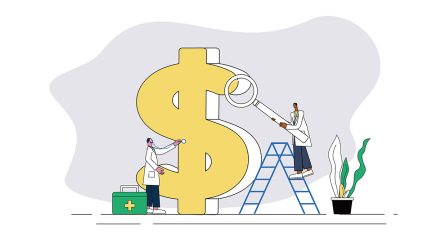For more stories like this, sign up for the PLANSPONSOR NEWSDash daily newsletter.
The Relationship Between Retirement Plans and HSAs
Experts at the session, held as part of the 2020 PLANSPONSOR HSA Conference, discussed incorporating health savings accounts and 401(k) plans into a holistic plan design.
Industry experts examined the relationship between health savings accounts (HSAs) and retirement planning during the first day of the 2020 PLANSPONSOR HSA Conference.
In the short term, HSAs hold the traditional benefits of a health care program, said Jeffrey Dorfman, managing principal of retirement practice at Qualified Plan Advisors. But, over a longer amount of time, the vehicles can help participants save money on qualified medical expenses, even in retirement.
As retirement plans and other benefits become more complex, more employers are inquiring about HSAs and how they play a role in retirement savings. Dorfman said he’s also seen an increase in employers requesting guidance on how to receive the most out of a 401(k) plan. As time goes on, he expects the conversation to unify all plan benefits, including HSAs.
“We anticipate a merging of the conversation in which you no longer distinguish how you can help your employees in your 401(k) versus how you can help employees in the HSA,” he explained. “Most employees don’t look at their benefits package as six or seven features; they look at it as one.”
Steve Lindsay, senior vice president of relationship management at HealthEquity, shared a similar thought. 401(k) and HSA benefits complement one another, he said. Instead of concentrating on one benefit offering, plan sponsors should provide a more holistic view of both features. “You can leverage this transaction of the HSA to talk about the benefits of the 401(k), and the longer-term savings applied to an HSA can benefit the participant, too,” he said. “Everyone can win by becoming more generalist experts than specialized experts.”
More expertise on both features will likely create interest in HSA offerings, too, Lindsay said. A lack of awareness about the benefits is largely a societal problem, Dorfman added. For most people, an HSA is a low priority because it doesn’t bring an immediate return or reward—its gratification is delayed over a period of years. Instead, participants are more likely to spend their time researching a material item that encourages instant satisfaction, such as a television set.
“Purchasing a TV brings a sense of reward; there’s an immediate utility,” Dorfman said. “The return is immediate, whereas HSAs and 401ks are delayed. … That is not something that we as consumers are not good at understanding.”
This is especially the case for younger generations, who might believe that retirement and health care costs will not immediately affect their finances. A misunderstanding about who HSAs can benefit is another obstacle to wider implementation, Lindsay added. For example, HSAs can benefit those who earn less than $75,000, he said. “No matter how much a participant is earning, they generate savings,” he argued. “We don’t see it tied directly to salary level. What’s really important for us to understand is that we need to meet each individual where they are. When they need to access dollars from their HSA, it’s available and they can. Without that trust, they are not as likely to put dollars in the first place.”
To appeal to the younger workforce, and particularly those younger workers in the blue collar or retail spaces, Lindsay recommended employers look to senior workers who have experience with HSAs. Finding people who spend a lot of time with younger employees and who can advocate for the benefits of an HSA can increase participation because they hold a higher level of trust with this group that others, such as human resource (HR) members, don’t, Lindsay said.
A combination of these tactics can push HSAs and 401(k) participation forward, Lindsay noted. Implementing a holistic plan design and improving employer communication and education will drive participant behavior. “We can drive a lot of behavior to help them do the math and understand that this plan design creates wins for people,” Lindsay concluded. “Bringing the data together that is health care and retirement data adds scale and is an important next step.”
You Might Also Like:
HSA Providers Fidelity, HealthEquity, HSA Bank, Saturna Earn High Marks From Morningstar
HSA Balances Went Up in 2024, but Participant Spend Ticked Down
Health Savings Account Adoption Spans Socioeconomic Spectrum
« House Committee Introduces ‘Securing a Strong Retirement Act of 2020’


